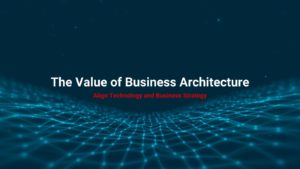Build Organizational Muscle.
As context and for convenience, here’s the original overview post in full.
Picking up with the focus of this post… the key is to have a plan, know what you would do and use the crisis to advance your strength and capability. If you don’t, you’ll be weaker and hamper the resilience of your enterprise to thrive while the crisis abates. This is about enhancing productivity, effectiveness, efficiency, and the agility of the organization.
Building Organizational Muscle is a huge topic. There are four major levers that need focus, investment, and orchestration.
- Workforce Mix & Skills (right size, right shape, right place, right skills, right cost)
- Operational Efficiency (high-speed software development, velocity, quality, DevOps)
- Architectural Re-Use (build once & use many, Common Services, Digital Hub/Core)
- Portfolio Modernization (dealing with the cost, complexity, and risk of existing assets)
I’ve broken the above into four separate blog posts because each of these topics is so important. Last week, I wrote about Workforce Mix & Skills in my Reshaping the Workforce post. This one is about “busting the bureaucracy”. I’ll continue, in future posts coming soon, to elaborate on the remaining two levers.
PART 4: OPERATIONAL EFFICIENCY – BUSTING THE BUREAUCRACY
One of the frustrating parts of being an IT leader is that our business partners continually brand us as being slow and expensive. That wouldn’t be so frustrating if it wasn’t true. When we attempt to speed up, we often break things, which has very damaging business outcomes. So, we continue to layer on process and people whose job it is to make sure we don’t “screw it up” ever again. For decades, we’ve added new steps, approvals, coordination or oversight roles, etc. “one good idea”. This has created layers and layers of bureaucracy. So, now, in many cases, IT is slow by design. But that won’t work in the modern era in general, and it certainly won’t work in times of crisis like what we are currently facing with COVID-19.
That’s why we’re all working on long-term, structural solutions like Scaled Agile (SAFe), DevOps, CI/CD Pipelines, Legacy Modernization, Journeys to the Cloud, and other big initiatives designed to ultimately make us faster, less risky, and less expensive. Many of us have plans to automate our software development and deployment processes. But we all know from our business system development backgrounds that if you don’t change the processes and the organization, you’re just automating the mess and you’ll never get the productivity. We need to look in the mirror and practice what we know about creating value… practice it on ourselves… on the internal way we work in IT. That will take time and courage, but we’ve got to BUST THE BUREAUCRACY and change the way we run IT.
Learning from Urgent Response Innovations from Just the Last Few Weeks
To prove we can go fast, there are some examples of Herculean acceleration from a number of companies that are part of our Feld Group Institute community. These are just a few examples of a few of the great stories I’ve heard from many of you over the last couple of weeks. The common pattern among these stories is that there was a long-term vision or a multi-month plan to make some change over time, but that change got accelerated during this crisis period we’re in. In all of these cases, when things were (old) normal, there was some patience, change resistance, internal debate, reasons why things would have to take a long time, and some level of process bureaucracy that made these “long-term” plans or initiatives. Then, as the crisis hit, these companies magically found a way to rally and get things done in a fraction of the time they had originally thought it would take.
- a hospital management system… broad-based rollout of Telemedicine services
- a financial services provider… allowing call center employees to work from home
- a logistics and distribution company… quickly switching from one declining customer segment into a new segment that has spiked and is now suddenly supply constrained
- a manufacturing company… moving quality approvals to electronic workflow & signature
The BUSINESS VALUE GOT DELIVERED QUICKLY and we DIDN’T BREAK ANY LAWS and NOTHING BAD HAPPENED.
I’m sure that, in these cases, they didn’t have to go through the normal control points, coordinators, approvals, change resistance, or bureaucracy at the same slow speeds as normal. It just wouldn’t have been possible to achieve what needed to be done for urgent business response. I’m equally sure that the perceived increased risk was worth the reward – and nothing bad happened. In fact, good results came out of these fast-track changes. And, any mistakes made were thought of as fast learning and adjustment iterations, instead of reasons to go back to or increase bureaucracy.
These were urgent business process changes that needed to happen to help front-line employees, customers, and business partners deal with the crisis. They also required IT and other support functions to find the best (fast AND safe) path to change and implementation. We can learn a lot from how companies and teams have responded so far and apply those lessons to changing how IT operates.
Also, I want to continue to encourage you to use our crisis response framework of “Go Short”(-Term) and “Go Long”(-Term) filters as you think about how you run IT. This template should be the way you approach gaining operating efficiency in your IT Operating Model.
“Go Short”(-Term): Immediately Pick the Low-Hanging Fruit
You can start tomorrow and make changes that you can control, have an immediate impact, and send a signal of a new normal to your team and your business partners. Here are some ideas that I’ve found almost always yield instant results – and that you can probably find in your own versions of things like the quick response business changes I provided as examples above.
- Lean out the processes and look for steps, rules and paperwork that really add value versus those things that just slow down progress. Some controls and compliance gates are really required. For those, remember that, over time, these should be automated. The rest can be questioned, simplified, or altogether eliminated as soon as possible.
- Create a sense of accountability and entrust your development teams to take responsible risks. This is not a license to “run red lights” but is an encouragement to find the best possible fast-but-safe solutions and own the responsibility to make them work. Coach the teams to be creative but not irresponsible, then trust them and see what they come up with.
- Change the aperture for approvals for work, decisions, and spending. Proper chunking will reduce the number of times that teams will have to run the gauntlet of the financial, technical, and project approval cycles. Fund bigger amounts and scopes of work and approve all the necessary infrastructure, software, and professional services required to get the whole job done. Then, let teams draw down resources and report only at the level of bigger “releases” or periods of time.
“Go Long”(-Term): Re-engineer Your Software “Factory”
Over time, to be competitive in the modern, digital era, we need to increase speed and quality in a more structural and lasting way. To do that will require the same approach to re-engineering processes that we’ve traditionally taken with all other major business initiatives. Think of software development and delivery as our “factory floor”.
As we’ve written about in our most recent white paper, you need to optimize your software development factory by Thinking, Planning, Architecting, and Justifying BIG and Developing, Implementing SMALL – delivering measurable business value continuously as you go.
The Way We Plan: How you do your Planning needs to enable architectural runway – and runway for other key resource areas like staffing, dollars, infrastructure, licenses, and business readiness to come together. Rolling-wave planning needs to occur, and continuously be maintained and adjusted, at three-year, 18-month, and three Program Increment time horizons. This runway will allow enough time for all support teams to anticipate and lay track for development teams to gain velocity and more easily build in quality.
The Way We Build: How you do your Building and delivering value should be in 10-12 week increments that include development team structures that have cross-functional (business, product, development, testing, architecture, infrastructure, run, etc.) teams embedded together. Those teams will collaborate better together to create better technology, and they will also be accountable end-to-end for the quality. If they know that they are going to be the ones who get “the call at 2:00 am” if the system breaks, you know they will focus on the implications for the Running of the system while they’re doing the Building. They will build “with Run in mind”.
Accelerate Your Plans for Speed
I liken the vision we should all have for our IT Operating Model to “the Autobahn” because it should be a high-speed highway that’s also safe and gets us where we need to go. Most companies in our community already have a plan for re-engineering, optimizing, and automating their “factory” or creating their “Autobahn”. This is like many other topics I’ve written about over the last couple of weeks. We would’ve loved to have achieved more productivity BEFORE the crisis hit. But, now, the crisis can be used as a wake-up call to not only “stay on it” but also to remove obstacles, “bust the bureaucracy”, and accelerate progress.
First “Go Short”(-Term): Start with the low-hanging fruit by cutting out unnecessary process steps, instilling a culture of trust and accountability with the development teams, and widening the aperture of approval cycles.
Then, “Go Long”(-Term): As the crisis abates, don’t lose momentum or enthusiasm for this. You might have to fight to get or keep the resources you need to finish the job of really changing your processes. But now you and your team will have seen the benefits created during the crisis. So, you should be able to sell the idea of “staying on” the real, deeper, lasting, and more structural impacts through culture, re-engineering, and automation of how you “run the place”.
Remember, our job is to deliver business value in cycles that are relevant to the times. In this era, speed matters.
Author: Charlie Feld, Founder, The Feld Group Institute
Connect with Charlie Feld on LinkedIn ![]()
Photo by Anastasia Petrova on Unsplash




